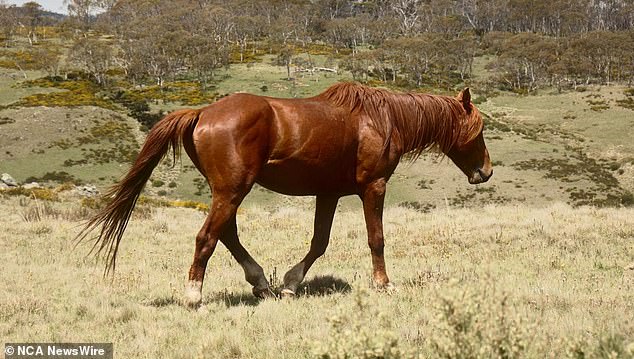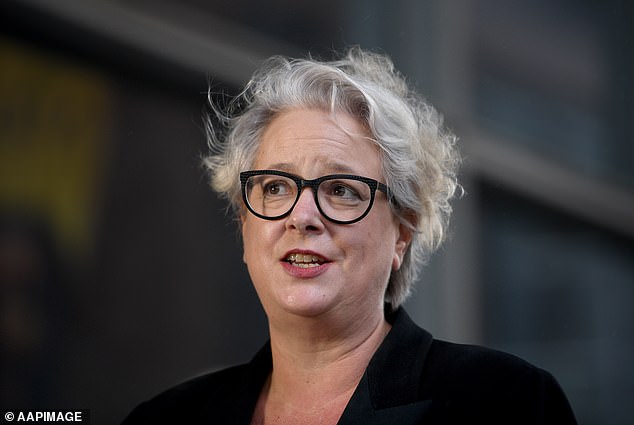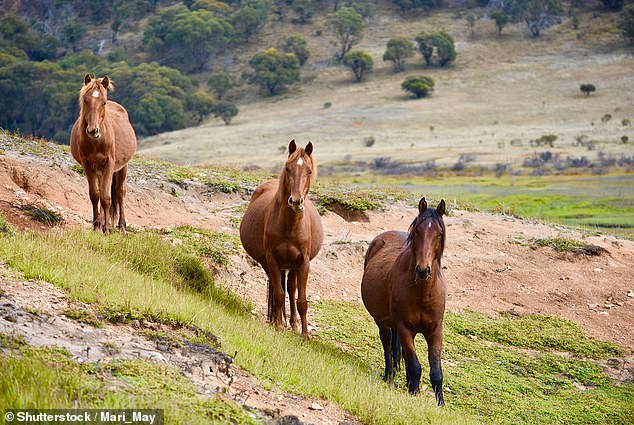More details have emerged about the property where more than 500 slaughtered horse carcasses were discovered, with allegations the animals were being killed as part of an illegal slaughter of horses for pet food.
Allegations of illegal horse slaughter, possession of firearms, presence of ovine testosterone and theft of a horse were referred to the New South Wales Food Authority as early as 2021, as revealed during a parliamentary inquiry into the aerial shooting of brumbies in Kosciuszko National Park.
This was three years before Wagga Wagga City Council confirmed the discovery of more than 500 horses in April this year.
Separately, new figures from NSW Environment Minister Penny Sharpe confirmed that 260 brumbies from the national park had been resettled on the Wagga Wagga property.
On Thursday, NSW Food Authority compliance director Greg Vakaci said they referred the matter to police but did not follow up on the complaint.
More details have emerged about the property where more than 500 slaughtered horse carcasses were discovered, with allegations the animals were being killed as part of an illegal slaughter of horses for pet food (file image)
Vakaci said he received no information about the number of bodies on the property.
His comments come amid ongoing investigations at the site, in a multi-government approach involving the Environmental Protection Authority, NSW Police, NSW Food Authority, Local Territorial Services, the Department of Primary Industries and Racing NSW.
Further investigation revealed that 434kg of animal meat was confiscated from the property, including 320kg of horse meat and 114kg of pork fat, Vakaci told the inquiry.
Vakaci said the presence of different animal products in one facility posed risks of cross-contamination.
“There are controls that ensure that certain animals are processed at particular points, and that comes down to how they are restrained,” he said.
‘It’s really important to minimize contamination and cross-contamination.
“Hypothetically, processing of different species occurs, but it is controlled through their systems.”
In April, Wagga Wagga City Council confirmed the discovery, after it was reported the horses had been abandoned in a dry creek bed.
The council said the bodies were found in various states of decomposition and had been discovered in locations throughout the property.
“Some of these bodies were nothing more than skeletal remains, while others were killed relatively recently,” the council said in a statement.
In evidence, NSW Environment Minister Penny Sharpe said what happened in Wagga Wagga was “shocking” and that about 260 horses from Kosciuszko National Park had been sent to the property.
Sharing updated figures for aerial shooting in the park, he said 8,505 horses had been removed between 2019 and May 20 this year, and 5,539 by aerial shooting.
Of the 2,760 horses that had been rehomed in the park, only one horse was missing.
Sharpe also confirmed that no money was exchanged to rehome the horses.

NSW Environment Minister Penny Sharpe confirmed 260 brumbies from the national park had been resettled on the Wagga Wagga property. A brumby is shown
He said the investigations had been conducted by a private company that he believed found there had been no wrongdoing by National Parks and Wildlife Service staff.
“The National Parks and Wildlife Service has discovered that only one horse was missing out of about 2,700 that have been trapped since 2019,” he said.
“Horses are provided free of charge and are obtained when requested and if available, suggesting there is no incentive to make improper payments.”
He said a review, due to deliver its findings on June 14, will look at how government agencies share data, with the Wagga Wagga property flagged by another agency that was not referred to NPWS staff, the department responsible for rehousing.
‘The review will get to the bottom of this, but I understand it was not shared with the national parks. “If that’s the case, then that shouldn’t have happened,” he stated.
Questioning by senior RSPCA staff also revealed that investigations in January only searched one of the 20 acres of the property, revealing around 20 live animals.
“Their priority is to assess and determine the condition of the live animals, which was also the subject of the complaint,” RSPCA chief executive Steve Coleman said.
“Once we are convinced that the condition of the live animals was adequate, the next step is to talk to the owner again.”

Ms Sharpe (pictured) said what happened in Wagga Wagga was “shocking” and about 260 horses from Kosciuszko National Park had been sent to the property.
Questions also arose about why investigators did not investigate or enter a cool room, despite allegations that the property was being used as an illegal scrapyard – a building used to slaughter animals for animal feed.
Coleman admitted that while investigators saw the cold room, they did not enter it.
Following intense cross-examination, Coleman admitted that the RSPCA should have referred this matter to the Department for Primary Industries.
‘Do we look at every fresh room in every property we go to? No. In retrospect, should we have? Yes,’ she said.


